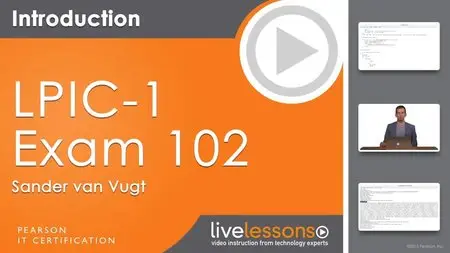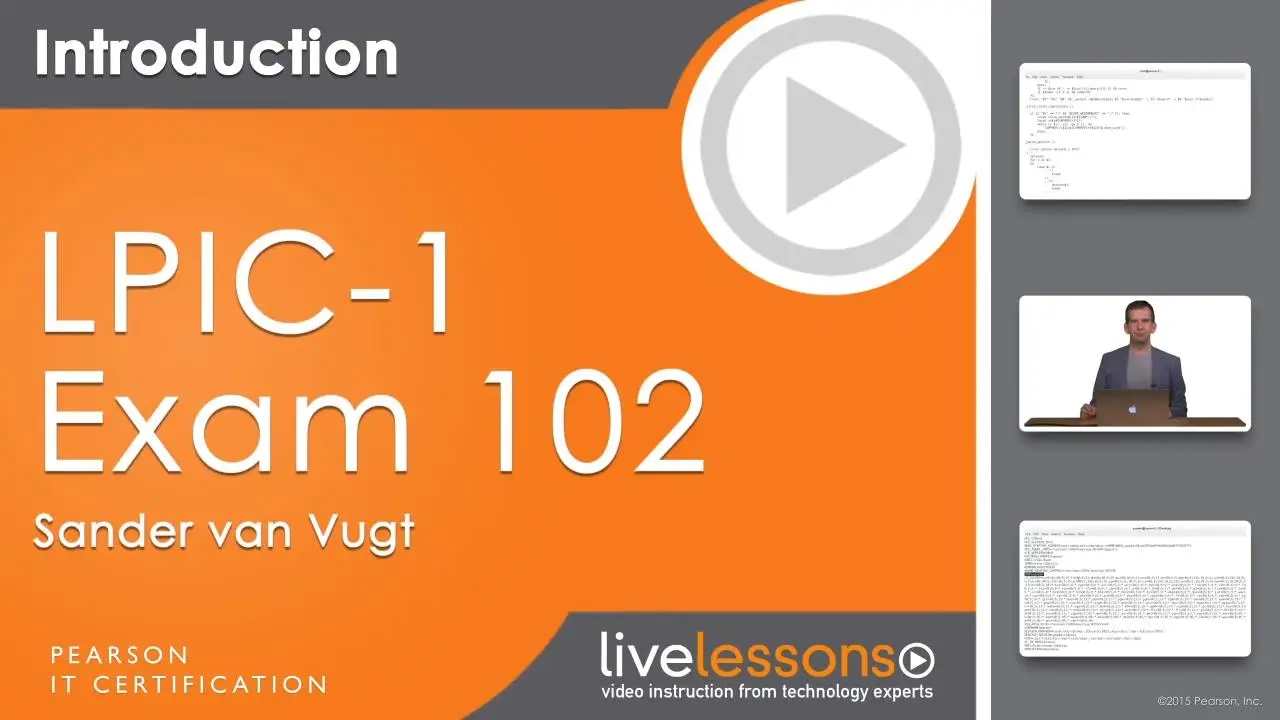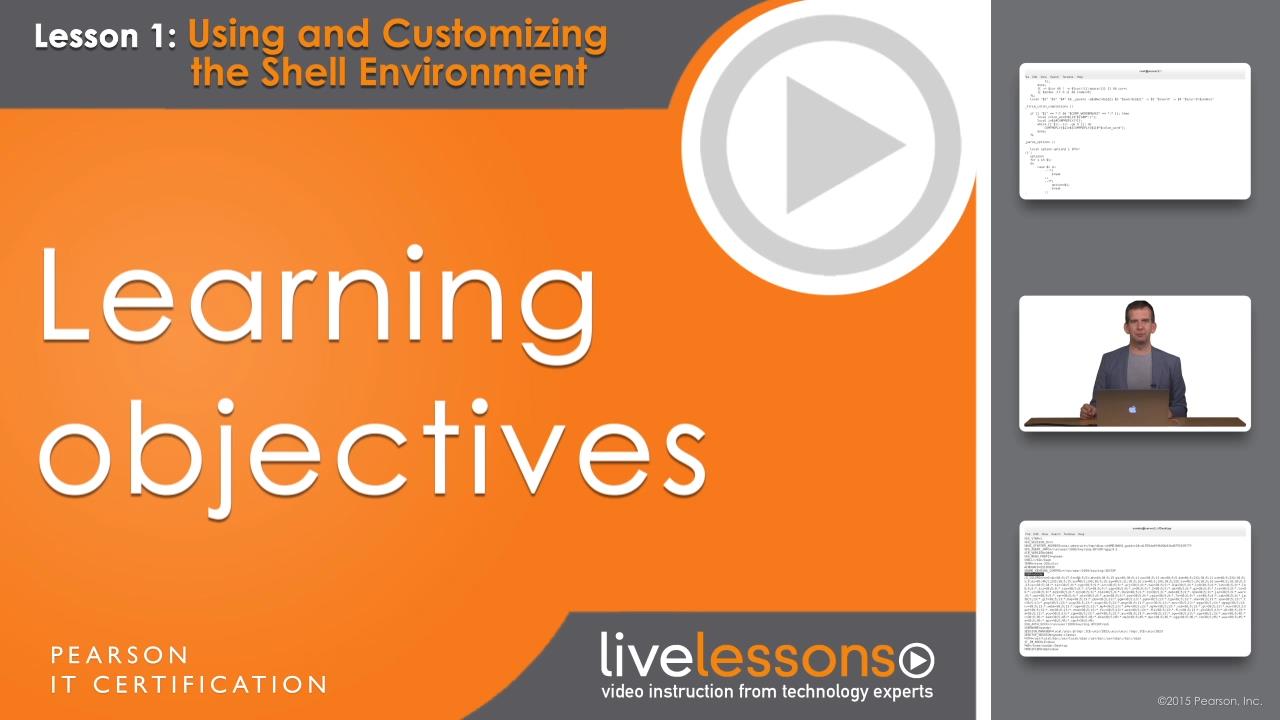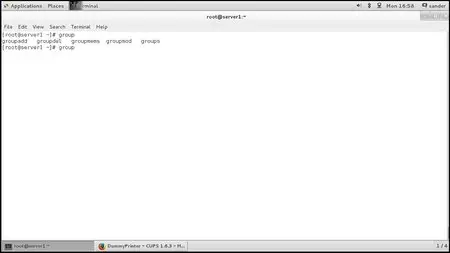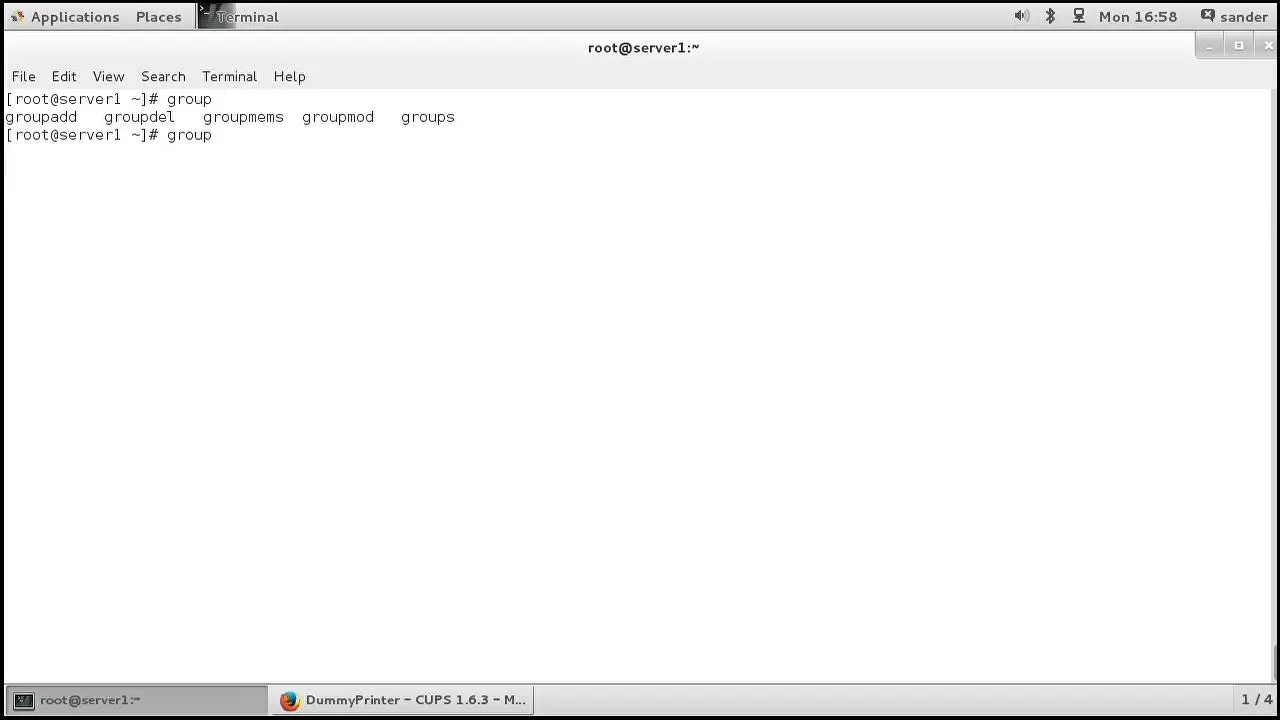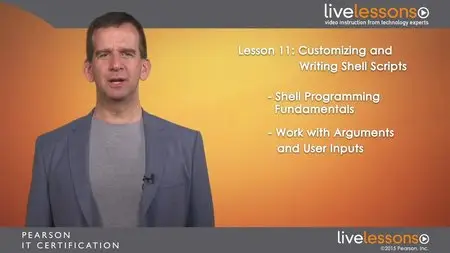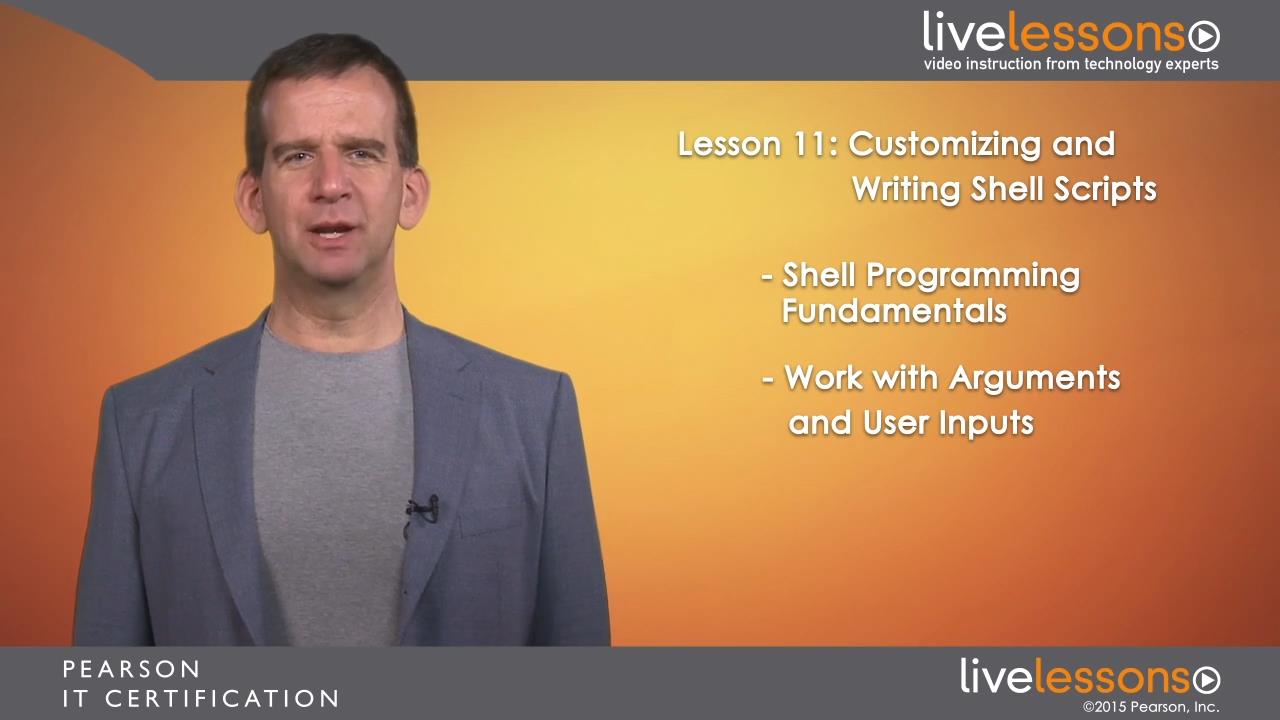LPIC-1 (Exam 102) LiveLessons: Linux Professional Institute Certification Exam 102
English | Jul 3, 2015 | ISBN: 0789754770 | mp4 | H264 1280x720 | AAC 2 ch | 6 hrs 56 min | 2.85 GB
eLearning | Skill Level: Beginning to intermediate
English | Jul 3, 2015 | ISBN: 0789754770 | mp4 | H264 1280x720 | AAC 2 ch | 6 hrs 56 min | 2.85 GB
eLearning | Skill Level: Beginning to intermediate
LPIC-1 (Exam 102) LiveLessons is a unique video course that provides a solid understanding of all topics that candidates need to master to pass the LPIC-1 (Exam 102) Certification.
Description:
This video course offers 14 lessons covering all the topics mentioned in the LPI objectives as published on www.lpi.org. This course doesn't just offer a preparation for the LPIC-1 102 exam, it also serves as an introduction for people who want to learn basic Linux administration skills.
The course can be used to study for the newest LPIC-1 (Exam 102) certification exam, as well as for the CompTIA Linux+ and SUSE CLA exams.
- Providing a Base Environment
- Common Administration Tasks
- Networking and Related Services
- Advanced Management Tasks
About the Instructor
Sander van Vugt is an independent Linux trainer, author, and consultant living in the Netherlands. Sander has written numerous books about different Linux-related topics and many articles for Linux publications around the world. Sander has been teaching Red Hat, SUSE, and LPI Linux classes since 1994. As a consultant, he specializes in Linux High Availability solutions and Performance Optimization. More information about Sander is on his website at www.sandervanvugt.com.
Who Should Take This Course
Primary audience: The target audience for this course is anyone who wants to acquire the basic Linux skills required for junior system administrators.
Secondary audience: A secondary audience consists of home users and hobbyists who want to acquire more knowledge about the operating system they are using.
Module 1
Providing a Base Environment
Lesson 1 Using and Customizing the Shell Environment
1.1 Setting Environment Variables at Login or When Spawning a New Shell
1.2 Using Bash Functions
1.3 Maintaining Skeleton Directories for New Users
1.4 Setting the Command Search Path
Lesson 2 Managing Printing
2.1 Understanding Linux Printing
2.2 Creating a Basic CUPS Configuration
2.3 Configuring a Text-only Printer
2.4 Print Job Processing
2.5 Managing User Print Queues
2.6 Troubleshooting General Printing Problems
Lesson 3 Managing User and Group Accounts
3.1 Adding, Modifying, and Removing Users
3.2 Adding and Modifying Groups
3.3 Managing User/Group Information in Password/Group Databases
3.4 Creating and Managing Special Purpose and Limited Accounts
3.5 Understanding Group Membership
Module 2
Common Administration Tasks
Lesson 4 Configuring Security
4.1 Auditing a System to Find Files with SUID/SGID
4.2 Managing Password Aging
4.3 Analyzing Ports with netstat and nmap
4.4 Setting Up Limits on User Logins, Processes, and Memory Usage
4.5 Configuring sudo
4.6 Determining Which Users Have Logged in and are Currently Logged in
4.7 Setting Up Host Security
4.8 Understanding Advanced Security Such as SELinux and Apparmor
Lesson 5 Scheduling Jobs
5.1 Creating and Managing at Jobs
5.2 Creating and Managing cron Jobs
5.3 Configuring User Access to cron and at Services
5.4 Configuring anacron
Lesson 6 Maintaining System Time
6.1 Understanding Linux Time
6.2 Setting System Date and Time
6.3 Setting the Hardware Clock
6.4 Configuring UTC and Local Time
Lesson 7 Configuring System Logging
7.1 Understanding Syslog Facilities, Priorities, and Destinations
7.2 Configuring Syslog
7.3 Reading Log Files and Configuring Logrotate
7.4 Logging In Non-syslog Services
7.5 Understanding journald, rsyslog, and syslog-ng
Module 3 Networking and Related Services
Lesson 8 Configuring Networking
8.1 Understanding IP Protocol Fundamentals
8.2 Configuring Network Interfaces with ip and ifconfig
8.3 Creating Basic Static TCP/IP Host Configuration
8.4 Understanding Routing
8.5 Setting a Default Route
8.6zConfiguring Client Side DNS
8.7 Applying Network Troubleshooting Basics
Lesson 9 Managing MTA Basics
9.1 Understanding Mail Handling
9.2 Creating E-Mail Aliases
9.3 Knowing Common Linux MTA Programs
9.4 Configuring E-Mail Forwarding
Lesson 10 Using SSH
10.1 Using ssh, scp, and sftp
10.2 Changing Common Client and Server Settings
10.3 Configuring SSH Host Keys
10.4 Understanding SSH Port Tunnels
10.5 Creating SSH Port Tunnels
10.6 Performing Basic GnuPG Configuration, Usage, and Revocation
10.7 Using GnuPG in E-Mail
10.8 Using GnuPG to Encrypt Files
Module 4 Advanced Management Tasks
Lesson 11 Customizing and Writing Shell Scripts
11.1 Selecting the Shell Interpreter Through the Shebang
11.2 Managing the Location, Ownership, Execution, and Suid-rights of Scripts
11.3 Understanding Shell Script Basic Elements
11.4 Working with Read and Arguments
11.5 Using Here Documents
11.6 Understanding Return Values
11.7 Performing Tests
11.8 Using Command Substitution
11.9 Using Loops and Conditional Tests
11.10 Performing Conditional Mailing to Superuser
Lesson 12 Accessibility and Internationalization
12.1 Understanding Keyboard Accessibility Settings
12.2 Understanding Visual Settings and Themes
12.3 Understanding Assistive Technologies Basics
12.4 Configuring Locale Settings and Environment Variables
Lesson 13 SQL Data Management
13.1 Understanding SQL Databases
13.2 Creating an Example Database and Basic Data Manipulation
13.3 Using Basic SQL Commands
Lesson 14 Managing User Interfaces and Desktops
14.1 Understanding X Configuration Files
14.2 Verifying Video Card Support
14.3 Getting X Display Information
14.4 Managing a Font Server
14.5 Setting Up a Display Manager
Course Intro (20 min)
This session introduces the course and explains what students can expect.
1. Using and Customizing the shell Environment (22 min)
In this lesson, the student learns how to customize the shell environment to provide basic settings as needed by users.
2. Managing Printing (30 min)
In this lesson, the student learns how the CUPS printing system is organized and how print jobs, as well as printers, can be managed.
3. Managing User and Group Accounts (35 min)
In this lesson, the student learns how user and group accounts are used and managed in a Linux environment.
4. Configuring Security (63 min)
This lesson shows how to apply different network and user-based security settings.
5. Scheduling Jobs (14 min)
In this lesson, the student learns how to schedule tasks and jobs using at and cron.
6. Maintaining System Time (18 min)
Linux stores time in different ways. In this lesson, the student learns about the different locations where time is stored and how these relate to one another.
7. Configuring System Logging (33 min)
In this lesson, the student learns how to configure system logging. The (r)syslog service is explained, as well as the systemd journal and logrotate.
8. Configuring Networking (43 min)
This lesson introduces networking in general, and teaches how to configure network interfaces with fixed or permanent network configurations.
9. Managing MTA Basics (12 min)
This lesson provides a basic overview of MTA and teaches students how to configure a system to send outgoing mail to a relay host.
10. Using SSH (48 min)
In this lesson, the student learns how to use ssh and related commands. Advanced SSH usage is also covered, including configuration parameters, working with SSH keys, and SSH port forwarding.
11. Customizing and Writing Shell Scripts (51 min)
This lesson provides an introduction to Linux shell scripting. At the end of this lesson, the student will be able to read bash shell scripts and write shell scripts using common structures.
12. Accessibility and Internationalization (11 min)
This lesson explains how to configure Linux for increased accessibility and for use in international environments.
13. SQL Data Management (25 min)
This lesson teaches learners how to set up a simple SQL database.
14. Managing User Interfaces and Desktops (20 min)
In this lesson, students learn more about the backgrounds of the graphical environment, along with the common administration tasks, commands, and configuration files involved in configuring a GUI.
Screenshots:


